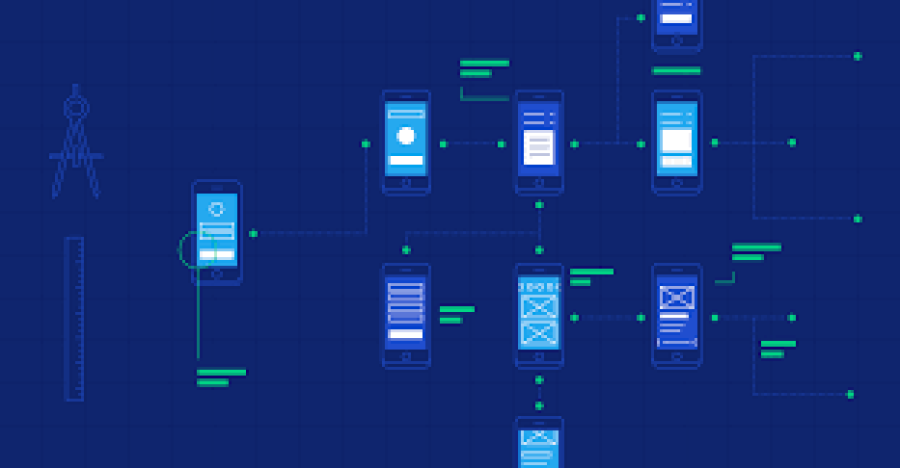Top Architecture Design Tools Every Freelancer Should Know
In the fast-paced world of freelance architecture, having the right tools can make or break your project! Whether you're creating blueprints, 3D visualizations, or collaborating with clients remotely, architecture design tools are your creative backbone. 🧰 As a freelancer, you need software that’s efficient, cost-effective, and tailored to your style of work. 💼
In this guide from freelancerbridge, we’ll walk you through the top architecture design tools every freelancer should know in 2025. Let’s future-proof your architectural workflow! 🚀
📐 Long Description (Full Article: 1500+ words)
🧱 1. AutoCAD – The Classic Essential
AutoCAD by Autodesk is one of the most popular and reliable drafting tools in the architecture world.
✅ Key Features:
Precise 2D & 3D design capabilities
Widely accepted in professional and academic environments
High compatibility with other Autodesk tools
💡 Why Freelancers Love It:
Its widespread industry use means freelancers can easily collaborate with firms and professionals.
🔧 Drawback: Subscription can be expensive for beginners.
🖼️ 2. SketchUp – Simple Yet Powerful
SketchUp is ideal for 3D modeling and is especially popular among beginner freelancers due to its intuitive interface.
✅ Key Features:
Easy drag-and-drop modeling
Vast 3D warehouse of pre-made models
Extensions for rendering and animation
💡 Freelancer Tip: Use the free web version to get started before upgrading to SketchUp Pro.
💡 3. Revit – For Building Information Modeling (BIM)
Revit is a BIM tool from Autodesk that allows freelancers to create smart 3D models with embedded information.
✅ Key Features:
Parametric modeling
Great for collaborative projects
Automatic updating of changes across all views
🚀 Freelancer Bonus: Perfect if you're working with construction or interior design firms.
🧠 4. Rhino 3D – The Creative Genius
Rhino 3D is a favorite for complex shapes and parametric design. If you’re into experimental or futuristic architecture, Rhino is a must.
✅ Key Features:
Precision modeling tools
Supports plugins like Grasshopper for parametric design
Compatible with CAD, CAM, 3D print, and rendering tools
⚡ Advanced Use Case: Combine with Grasshopper to automate and customize designs.
🖌️ 5. ArchiCAD – The All-in-One BIM Tool
ArchiCAD is a robust BIM software by Graphisoft that offers great documentation and rendering features.
✅ Key Features:
Team collaboration
Fast performance on large projects
Integrated rendering with CineRender
💡 Why It’s Ideal for Freelancers: Its smooth learning curve and project management tools make it ideal for solo practitioners.
🌐 6. Adobe Photoshop – For Presentation and Visualization
Photoshop isn’t strictly an architectural tool, but it’s essential for post-processing renderings, collages, and concept boards.
✅ Key Features:
Image editing and layering
Mood board creation
Annotated project presentations
🎨 Creative Edge: Enhance raw renders with realistic textures and lighting for client presentations.
🏘️ 7. Lumion – Real-Time Architectural Rendering
Lumion turns 3D models into breathtaking visual stories. It’s fast, intuitive, and excellent for freelancers who want to impress clients with photorealistic results.
✅ Key Features:
Real-time rendering
Library of materials, lights, and objects
Integration with SketchUp, Revit, and ArchiCAD
📽️ Why Use It: Save time while producing professional-quality visuals with animation and effects.
🎯 8. V-Ray – High-End Rendering Plugin
V-Ray works as a plugin for various 3D tools like SketchUp and Rhino. It delivers high-quality renderings used in professional portfolios and commercial proposals.
✅ Key Features:
Photorealistic render output
Supports ray tracing and global illumination
Flexible licensing options
⚡ Freelancer Hack: Combine with SketchUp for the perfect balance of speed and realism.
📲 9. Morpholio Trace – Perfect for iPad Users
If you’re a mobile freelancer, Morpholio Trace is a sketching and design tool built for tablets.
✅ Key Features:
Draw over PDFs, images, and 3D models
Cloud sync for remote collaboration
Great for quick concept development
✍️ On-the-Go Use: Ideal for site visits, client meetings, and spontaneous ideas.
🔄 10. Blender – Free & Open-Source Powerhouse
Blender is a versatile open-source tool that supports modeling, sculpting, rendering, and animation.
✅ Key Features:
No cost to use
Built-in rendering with Cycles and Eevee
Extensive community support
🔥 Freelancer Advantage: Great for creating animations, walkthroughs, and experimental structures without paying a dime.
🚀 Tips to Choose the Right Tool as a Freelancer
🧩 Every freelancer’s needs differ, so here are tips to help you choose the right tools:
Budget First – Go for tools with free or trial versions when starting out.
Client Requirements – Understand what format your clients expect (DWG, BIM, 3D, etc.).
Learning Curve – Choose tools that match your skill level.
Integration – Make sure your design tool integrates with others (renderers, CAD, etc.).
Mobility – If you travel often, consider mobile-friendly tools like Morpholio or cloud-based platforms.
🌟 Bonus: Tools for Project & Time Management
Being a freelancer means juggling design, deadlines, and documentation. Here are bonus tools to boost productivity:
Trello / Notion – For task and project tracking 📋
Clockify / Toggl – For time tracking and billing ⏱️
Dropbox / Google Drive – For file sharing and cloud backup ☁️
Canva – For making stunning client proposals and presentations 🎨
🏁 Conclusion
Choosing the right architecture design tools as a freelancer can elevate your creativity, efficiency, and professional credibility. Whether you're drafting a blueprint, creating a 3D model, or rendering a photorealistic structure, the right software can turn your concepts into masterpieces. ✨
At freelancerbridge, we believe that tools should empower your creativity, not limit it. Start small, learn consistently, and scale your toolkit as your career grows. 💼


 by Emily
by Emily




